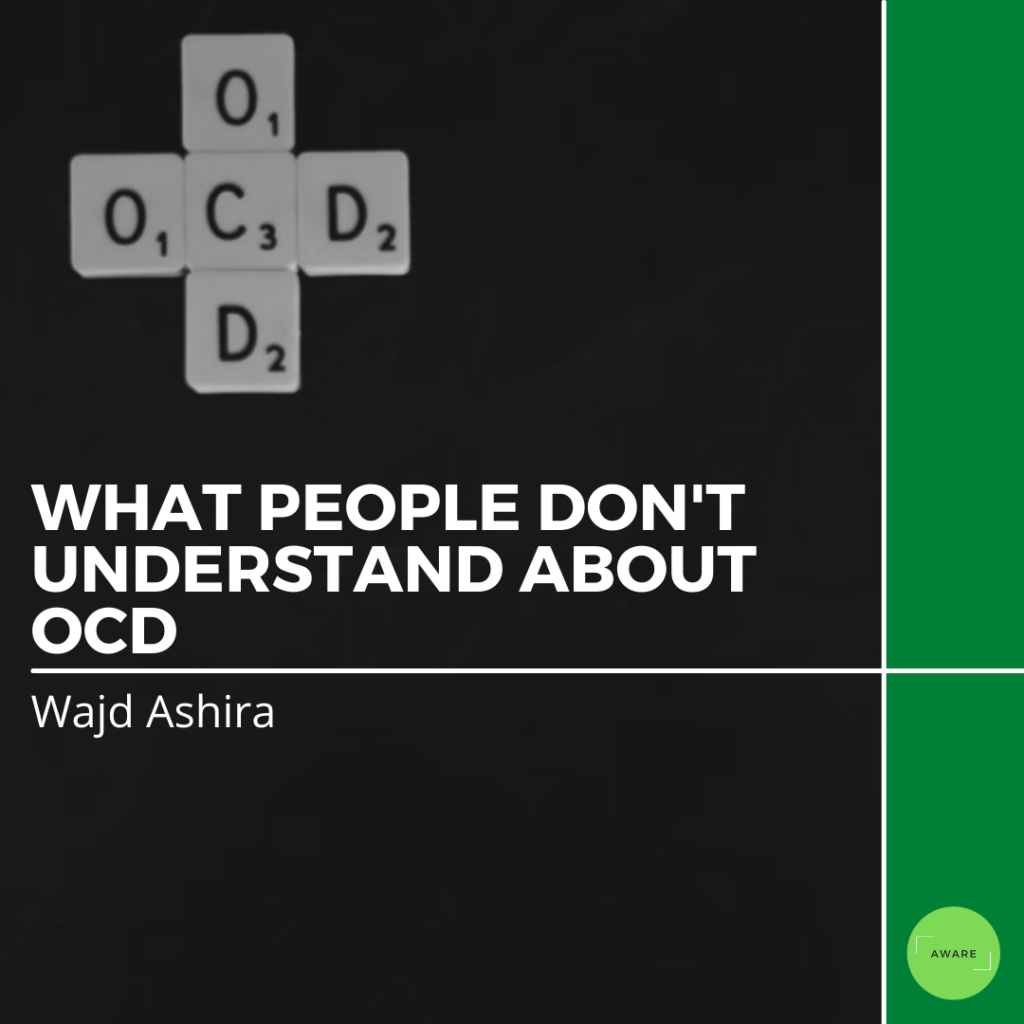Obsessive Compulsive Disorder is a very complex disorder that is often romanticized on social media. “Oh my god! My OCD is kicking in” or “I am a little OCD” are common ignorant phrases that we all heard at some point. These phrases do not only misrepresent OCD as a mental disorder, but they also misuse the term as an adjective when it is a noun that refers to a mental disorder. Many people have the common misconception that OCD is associated with perfectionism and being overly hygienic. These people believe that if a person constantly washes their hands, then it is probably OCD. However, if the thought of wanting to wash their hands is not a disruptive, critical one that hinders the major activities that need to be carried out throughout the day, then it is probably not OCD. Hence, the term “disorder” is important to highlight when discussing OCD.
The Definition of OCD
People diagnosed with OCD experience a series of intrusive or unwanted thoughts that lead them to engage in cyclical and repetitive behaviors which are referred to as compulsions. The mentioned intrusive thoughts are called obsessions. They are thoughts that are extremely distorting, draining, and reoccurring. The person may endeavor to quench or suppress these thoughts since they are aware that these thoughts are nonsensical, but they have little to no control over them. As mentioned, compulsions are constant, recurring acts that are carried out in order to reduce the distress caused by the obsessions. Again, compulsions are not carried out because of pleasure. People with OCD are compelled to commit such acts.
An Example of a Person with OCD
A prominent simple example of a person with OCD is checking if the oven is off before leaving your house. This might sound like a ridiculous or preposterous example, but its intensity will be conveyed as it is further explained through the perspective of a person with OCD. The person wakes up in the morning to prepare themselves to go to work. Before leaving, they check if the oven is off, then they leave. After leaving and locking the door, they turn the knob and unlock the door again to, once again, check if the oven is turned off. They leave to the parking basement to start their car, but they are still not positive about the fact that the oven is off. Hence, they go ride the elevator, go back to the apartment, and make sure that the oven is turned off. Halfway through, they are still constantly thinking that the oven is on and might eventually start a fire. So, what they do is go back to their house and check if the oven is on again. Because of this, they are late to their work, and they can potentially get fired. This mini story connects both compulsions and obsessions and shows how they can impede on the lives of people with the disorder.
The key takeaway here is not checking whether the oven is actually on or off. The obsession comes from a deeper cause of distress in the minds of those with OCD. Oftentimes, cases, like in this example, where the oven could be on are feared for a bigger reason, such as a tragic disaster happening. Obsessions of those with OCD are tied with much bigger fears that are often considered “unreasonable” for an outsider. In such a case, in the mind of someone with OCD, carrying out the compulsion is what stops said disaster from happening. Another example would be people having to wear their right sock before their left sock because it would prevent the said feared event. The thing with OCD is that it varies greatly between patients. Every individual patient has their own set of feared events, obsessions, and compulsions – not to mention that there are several types of OCD. Not all subtypes of OCD are rooted in being “perfect” and “clean”.
Other Related Disorders
There are two other disorders that fall under the umbrella of OCD, which are body dysmorphia and hoarding disorder. A person with body dysmorphic disorder will have these preconceived negative thoughts about any part of their body, and that supposed flaw might not even be noticeable to people. People with such a disorder also have recurring disruptive thoughts towards a certain part of their body that render them act in a certain way, such as uncontrollably looking at the mirror or even undergoing cosmetic surgery. People with hoarding disorder keep many futile and useless objects although they will not be of any use. The number of compiled objects can be humungous to the extent where the person will not even be able to sleep in their room.
